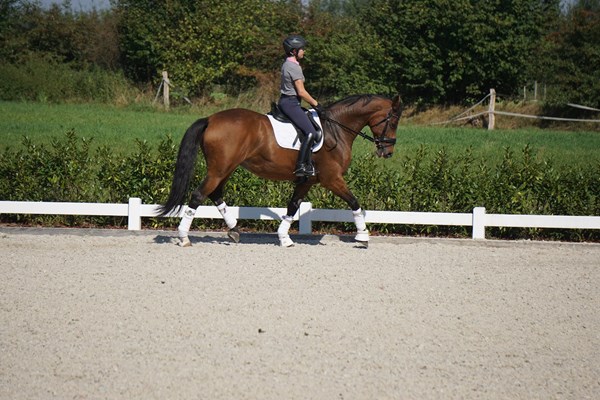If you’re a football fan, keep an eye as you watch games next weekend for the positions of the quarterback and the receivers on the field. They can be affected as much by the physical layout of the field as you are by the construction of an outdoor dressage ring. Both an outdoor ring and a football field are not as flat as they appear but must be crowned or sloped to direct water to the sides.

Probably the best system is to crown the center so the water has the shortest distance to flow to either side. Some dressage rings I’ve seen are sloped all toward one side or from one end to the other. This might depend on the contours of the land to begin with and where nature wants to direct the water. A slope can be as much as 2 to 3 percent.
The “crown” arrangement on a football field can be a determination of player placement, and I find this topography fascinating. One reason football quarterbacks and receivers need to be so tall is that, when they pass near toward the sides, the 2 percent slope makes a short receiver harder to spot. I’ve heard my husband (a former sports editor) talk about this several times. I’m not sure if it will affect how you might ride in a dressage ring. However, if you sometimes feel that you are going uphill or downhill, especially if you are doing a lengthening, that may certainly be the case.
I was judging a couple weeks ago in a ring place within a large outdoor arena. I noticed as I first sat down at C that the ring clearly dropped away toward A. I checked behind and realized the land was indeed higher behind me. That made the construction of the ring to slope away from where I sat to be the logical choice.
When you are preparing to compete at a show, if you can determine the direction of slope, this might give you a bit of an advantage. Look for the placement of drains, which will indicate to you which way the slope has been graded. Your horse will naturally drift with the slope, so a 15-meter circle that is directed toward the uphill side will likely stay at or inside 15 meters, while one directed down the slope might drift out a couple meters. If the ring is sloped lengthways, you might be able to be more aggressive with lengthenings and transitions that go uphill, while planning for more half halts with lengthenings that go downhill.











